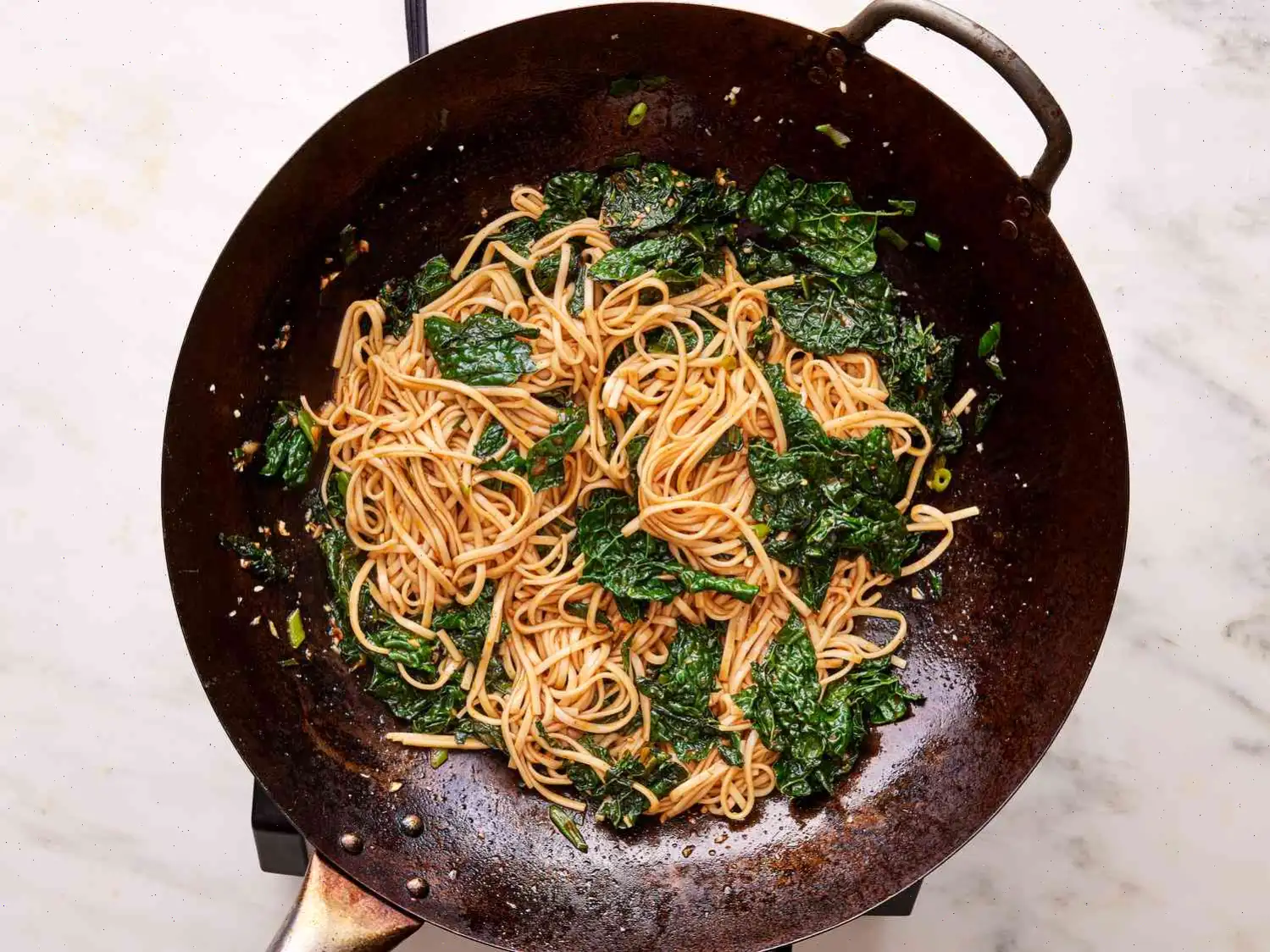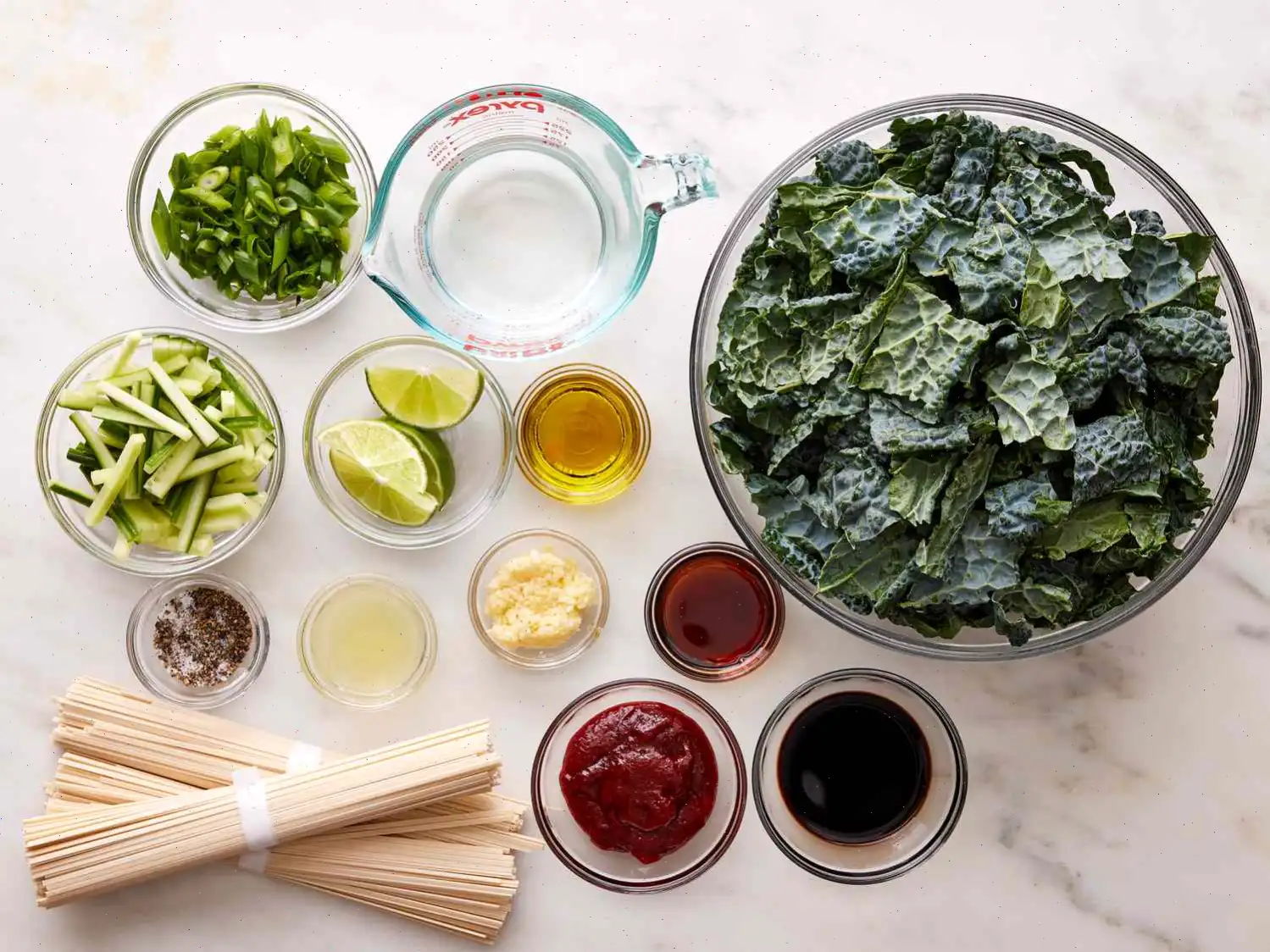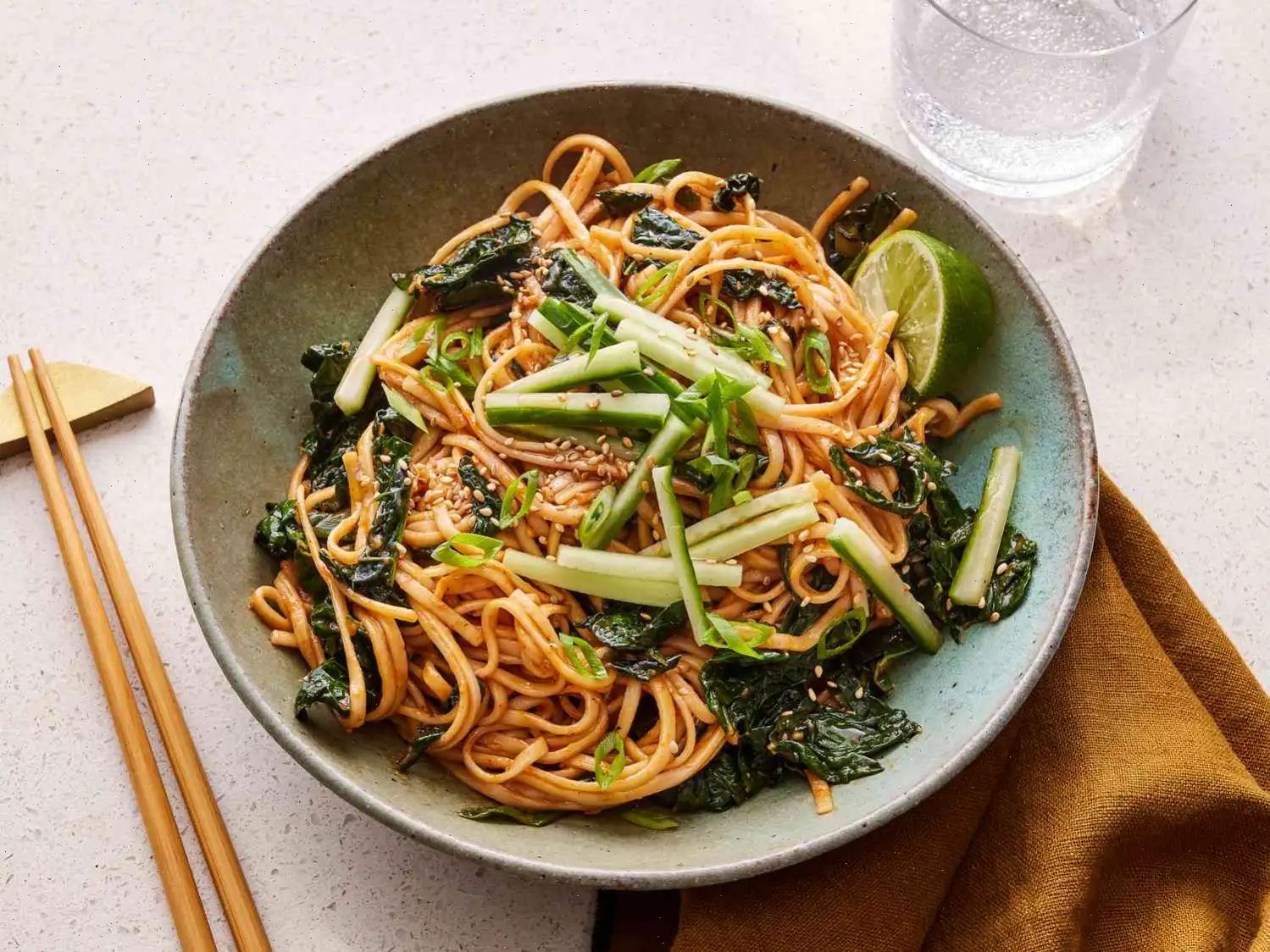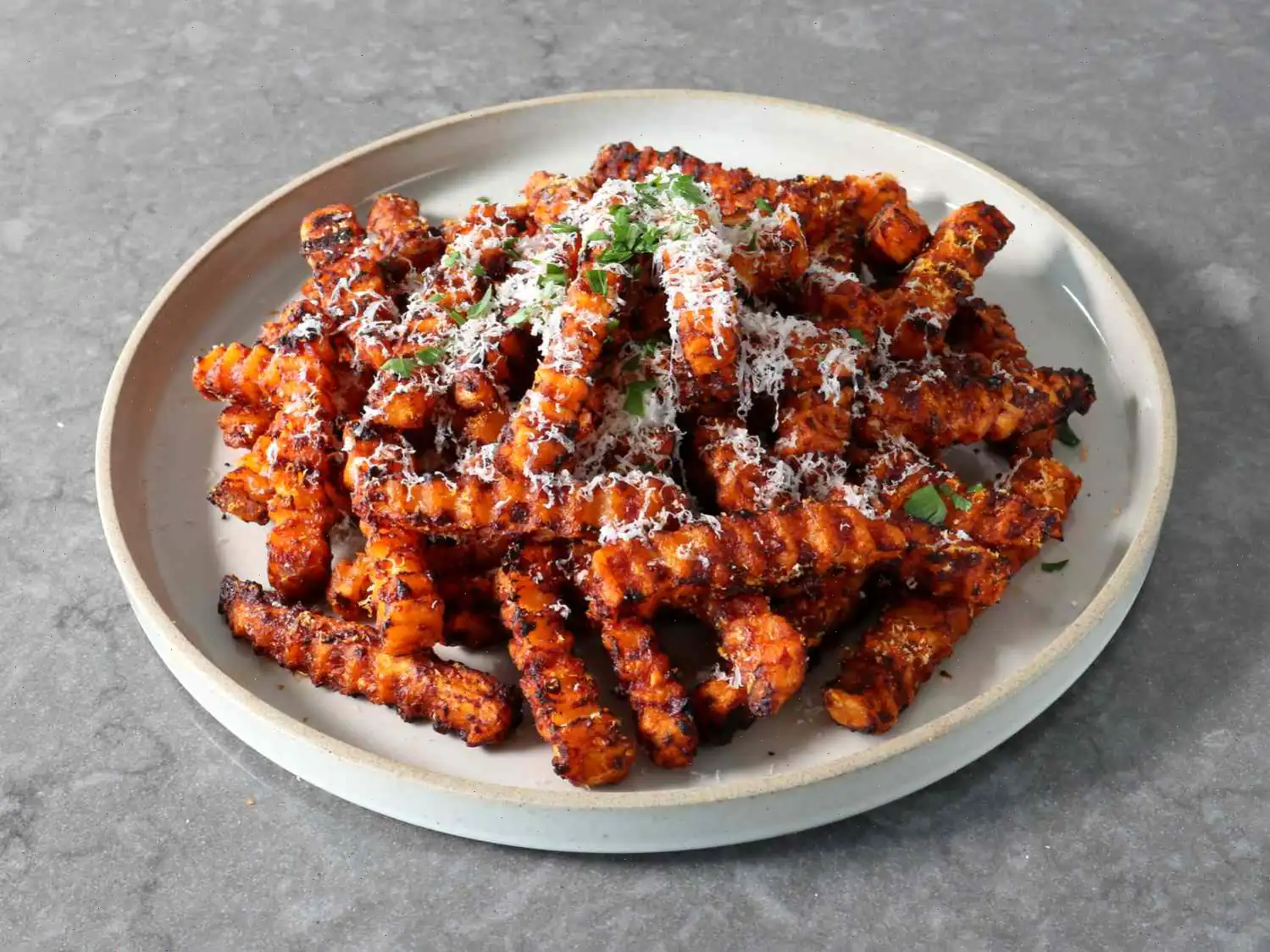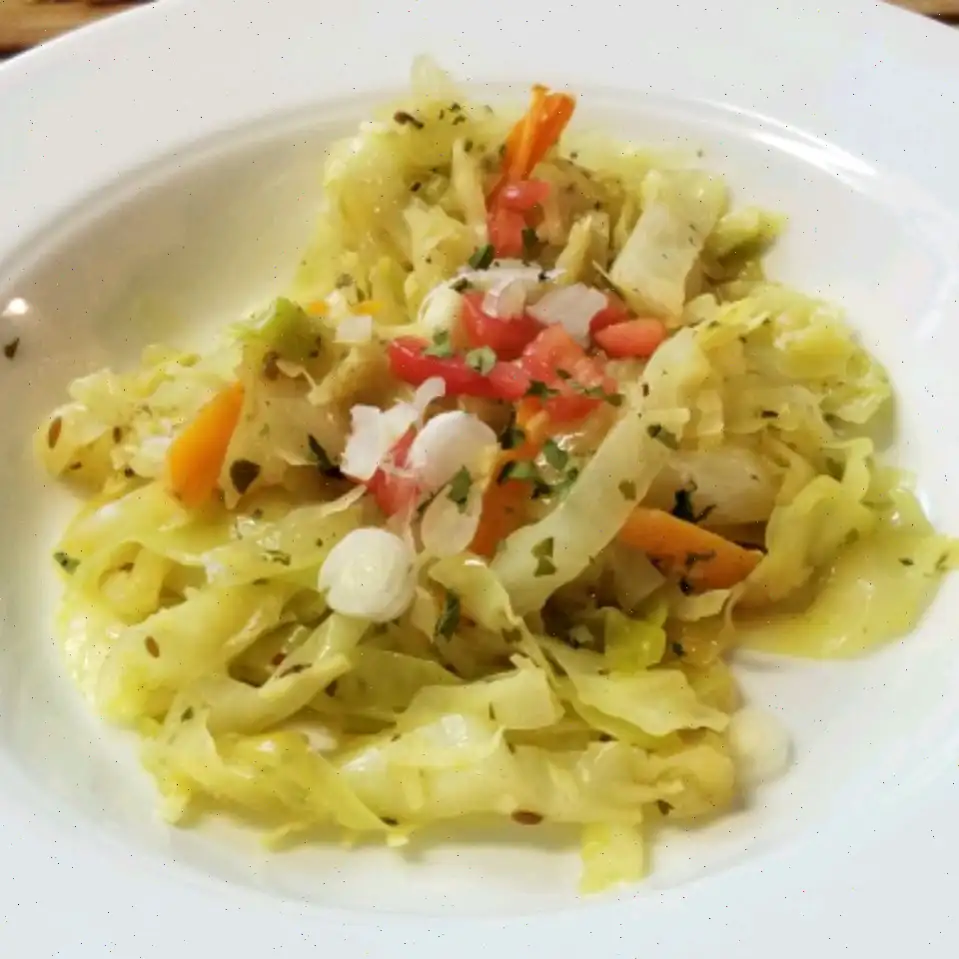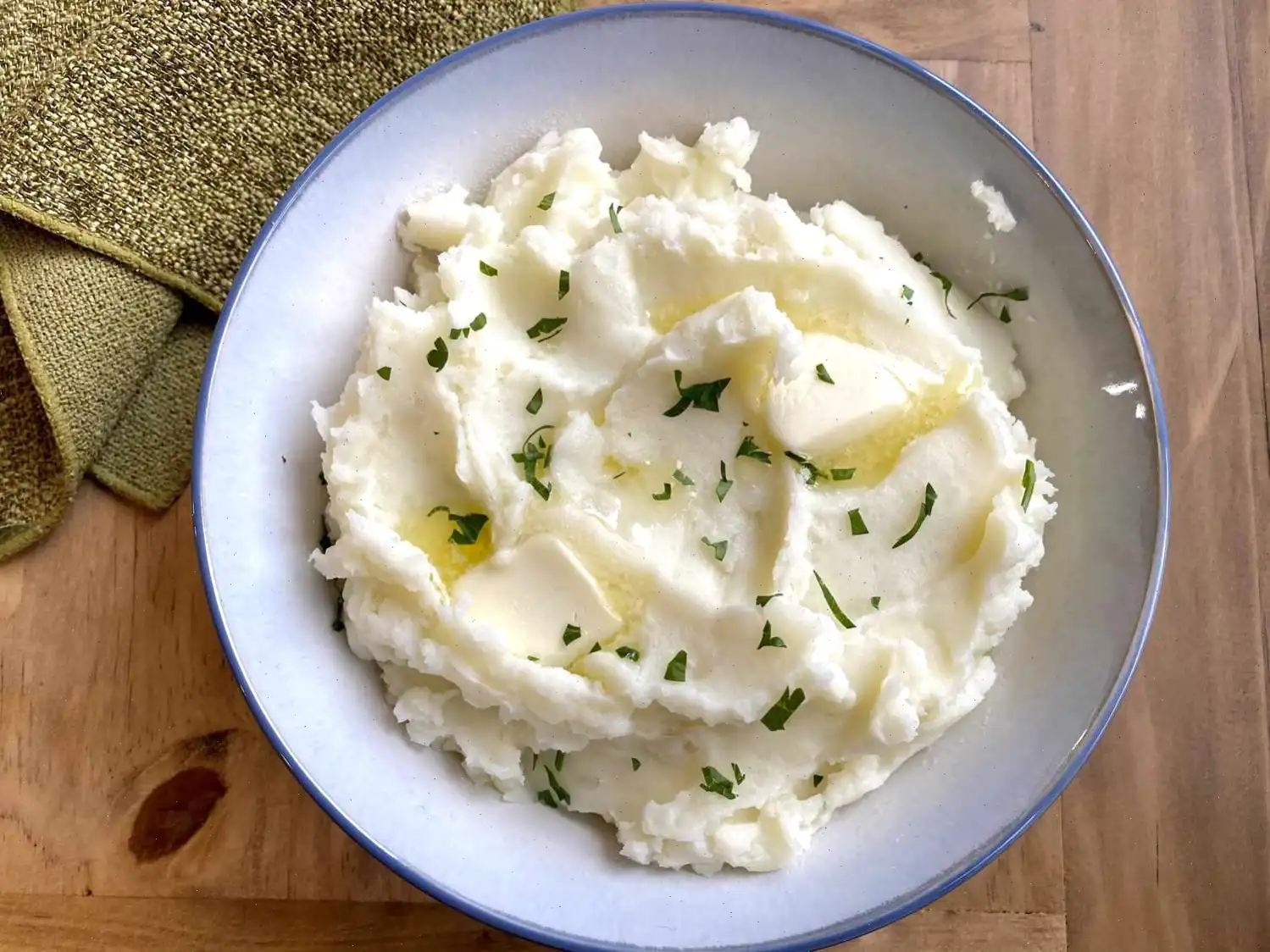
Gochujang Noodles Recipe
Ingredients (4 servings)
- 1 (8 oz) package udon noodles
- 1/4 cup gochujang (adjust to taste)
- 1/2 cup water, divided
- 2 tablespoons soy sauce
- 1 tablespoon maple syrup
- 1 tablespoon fresh lime juice
- 2 tablespoons olive oil
- 1 (10 oz) bunch dinosaur (lacinato) kale, ribs removed and roughly chopped
- 1/2 cup scallions, divided
- 1 tablespoon garlic, minced
- 1 teaspoon kosher salt
- 1/2 teaspoon freshly ground black pepper
- 1/2 cup matchstick-cut cucumber
- Toasted sesame seeds
- Toasted sesame oil
- 1/2 lime, cut into 4 wedges (for serving)
Directions
Step 1: Gather all ingredients.
Step 2: Bring a large pot of lightly salted water to a boil. Cook udon noodles, stirring occasionally, for about 10 to 12 minutes, or until the noodles are tender but firm to the bite. Drain and rinse under cool water. Set aside.
Step 3: In a bowl, whisk together gochujang, 1/4 cup of water, soy sauce, maple syrup, and lime juice. Set the sauce aside.
Step 4: Heat olive oil in a wok or large skillet over medium-high heat until it shimmers. Add kale, 1/4 cup of scallions, garlic, salt, and pepper. Stir constantly with tongs, cooking for about 2 minutes, until the kale is tender and the garlic and scallions become glossy and almost translucent.
Step 5: Add the prepared sauce to the kale mixture and continue cooking for another 1 to 2 minutes, allowing the sauce to thicken slightly and darken in color.
Step 6: Add the cooked udon noodles to the pan. Stir and cook for another 2 to 3 minutes, until the sauce is bubbling in the pan. Gradually add the remaining 1/4 cup of water, 1 tablespoon at a time, if the noodles need more sauce to coat them.
Step 7: Top the dish with matchstick-cut cucumber, the remaining 1/4 cup of scallions, and toasted sesame seeds. Drizzle with toasted sesame oil and serve immediately with lime wedges on the side.
Nutrition Facts (per serving)
- Calories: 299
- Fat: 15g
- Carbs: 39g
- Protein: 8g
- Sodium: 1683mg
- Fiber: 5g
- Vitamin C: 100mg
- Calcium: 218mg
- Iron: 3mg
- Potassium: 564mg

The Origins and Cultural Significance of Gochujang Noodles
Gochujang noodles are a modern adaptation of traditional Korean flavors, centered around gochujang, a fermented red chili paste with a rich history. Gochujang itself dates back centuries in Korea, originally used in royal kitchens and rural households alike. The paste is made from chili powder, glutinous rice, fermented soybeans, and salt, giving it a distinctive sweet-spicy umami profile. The combination of this paste with noodles reflects a fusion of traditional Korean ingredients and contemporary quick-cooking techniques, making it a favorite comfort food both in Korea and internationally.
Regional Variations and Characteristics
While gochujang is a staple across all of Korea, noodle preparations vary by region. In Seoul, Gochujang noodles are often served stir-fried with fresh vegetables and garnished with sesame seeds and scallions, emphasizing a balanced texture and mild spiciness. In contrast, southern provinces like Jeolla may add seafood or incorporate a richer, sweeter sauce. Some regions favor udon-style thick noodles, while others use thinner wheat noodles for a lighter, more delicate dish. These subtle differences highlight local tastes and ingredient availability, showcasing Koreas diverse culinary landscape.
Comparison with Similar Dishes
Gochujang noodles are often compared to dishes like bibim-guksu or jajangmyeon. Unlike bibim-guksu, which uses a tangy and slightly sweet chili sauce over cold thin wheat noodles, gochujang noodles are typically served warm and incorporate a richer, thicker sauce. Jajangmyeon, with its black bean paste, offers a savory and slightly bitter flavor, whereas gochujang noodles are distinctly spicy and slightly sweet, with the umami depth of fermented chili paste. This combination of heat, sweetness, and fermented richness gives gochujang noodles a unique identity in the world of Korean noodle dishes.
Where Gochujang Noodles Are Served
Gochujang noodles are versatile and found in both casual and more refined dining settings. In Korea, they are commonly served at street food stalls and local noodle shops, providing a quick, satisfying meal. In contemporary restaurants worldwide, they appear on fusion menus alongside other Korean favorites like kimchi fried rice or bulgogi. Home cooks often prepare them as a simple yet flavorful weeknight dinner, thanks to their minimal cooking time and easily sourced ingredients.
Interesting Facts
- The word gochujang literally translates to red chili paste, emphasizing its fiery color and taste.
- Fermentation of gochujang can take months, with traditional methods producing deep, complex flavors that cannot be replicated by store-bought paste.
- Adding lime juice or other acidic components is a modern twist, balancing the natural sweetness of gochujang and brightening the dish.
- Gochujang noodles are part of a growing global trend of Korean cuisine, popularized by the worldwide appreciation of Korean food culture and K-pop influence.
- Many chefs experiment with proteins like shrimp, tofu, or chicken, making this dish highly customizable while maintaining its signature flavor.
Overall, gochujang noodles represent a delicious marriage of tradition and innovation, offering a dish that is as culturally rich as it is easy to prepare.
FAQ about Gochujang Noodles Recipe
Comments
Kevin Wilson
08/09/2024 07:15:15 AM
The meal was decent. It had a hint of spiciness but lacked depth in flavor. It didn't feel very satisfying. I doubt I'll attempt to cook it again since I'm not sure how to enhance its taste.
Benjamin Martin
09/19/2022 10:44:51 PM
We absolutely adored this recipe! Although it took over 10 minutes to prepare, the end result was definitely worth it. Instead of using kale, I opted for a bag of Trader Joe's chopped salad and threw in some fresh shrimp for extra protein. I'm considering making a batch of the sauce to have on standby for future recipes. Such a tasty dish!


